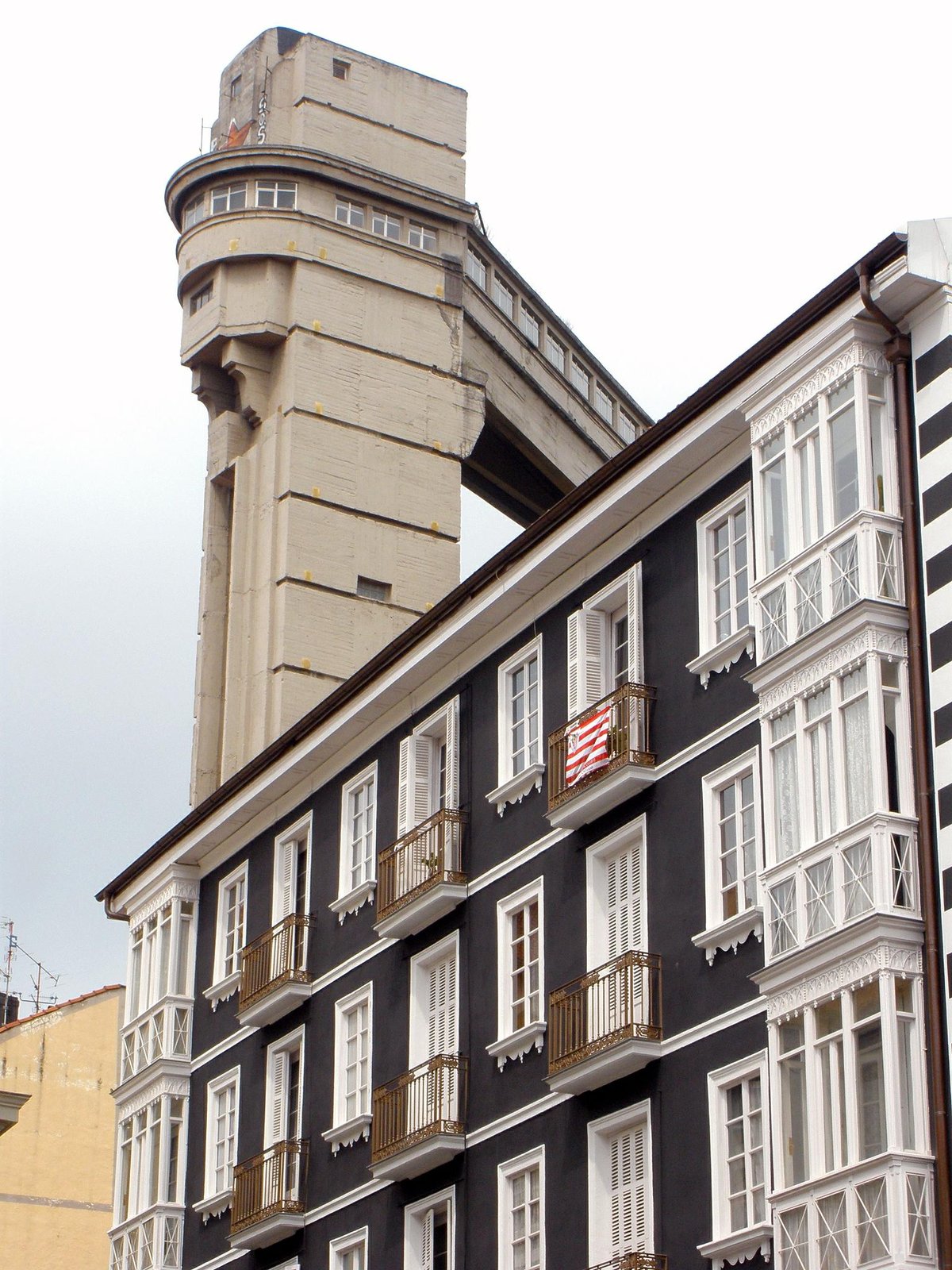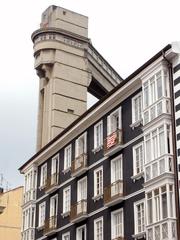
Ascensor de Begoña Bilbao: Visiting Hours, Tickets, and Travel Guide
Date: 15/06/2025
Introduction
The Ascensor de Begoña, a historic public elevator in Bilbao, Spain, stands as both a symbol of the city’s innovative urban mobility and a Modernist architectural icon. Originally built to connect the bustling Casco Viejo (Old Town) with the elevated Begoña neighborhood, this unique structure has played a pivotal role in Bilbao’s social, architectural, and urban development. Although closed since 2014, ongoing restoration efforts promise a revival of this beloved landmark. This comprehensive guide explores its history, design, current status, visiting information, accessibility, and nearby attractions to help you plan a future visit.
Table of Contents
- Historical Significance and Urban Context
- Architecture and Engineering
- Visitor Information and Practical Tips
- Restoration and Future Plans
- Frequently Asked Questions (FAQ)
- Summary and Recommendations
- References
Historical Significance and Urban Context
The Ascensor de Begoña was conceived in response to Bilbao’s challenging topography. The steep 351-step Calzadas de Mallona separated Casco Viejo from Begoña, making daily life and religious pilgrimages arduous for locals and visitors (ilovebilbao.com). As early as 1884, proposals were made for a mechanical solution, but the elevator only became a reality during Bilbao’s industrial boom in the mid-20th century.
Inaugurated in 1949, the elevator quickly became a vital link, democratizing access between neighborhoods and symbolizing Bilbao’s embrace of modern urban solutions (ascensordebegona.wordpress.com).
Architecture and Engineering
Design and Construction
Rafael Fontán, a Bilbao-born architect celebrated for his Modernist and Rationalist work, designed the Ascensor de Begoña. His vision fused function with striking form: the 54-meter-high exposed reinforced concrete tower and panoramic footbridge exemplify Machine Age aesthetics and anticipate later Brutalist trends (patrimonioindustrialvasco.com).
Fontán’s collaboration with mining engineer Javier Arisqueta ensured the elevator overcame significant structural and technical challenges. The lower station was discreetly integrated into Calle Esperanza’s urban fabric, while the upper gallery provided a celebrated viewpoint over the city and the Nervión River.
Symbolic Value
Beyond its practical role, the elevator became an urban symbol—connecting not only places but also communities and cultural traditions, such as pilgrimages to the Basílica de Begoña. Its silhouette, alongside other landmarks like the Etxebarria Park chimney, defines Bilbao’s cityscape and cultural memory.
Visitor Information and Practical Tips
Visiting Hours and Tickets
Current Status:
- The Ascensor de Begoña has been closed since July 2014 due to financial, legal, and administrative challenges (deia.eus; edificiosinsignesdesaparecidosenbilbao.wordpress.com).
- No public visiting hours or tickets are available at this time.
Future Plans:
- Upon reopening, the elevator is expected to operate 24 hours a day, with free public access, as part of Bilbao’s municipal network of public lifts (deia.eus).
Accessibility
The elevator was historically designed with accessibility in mind, featuring ramps and facilities for people with reduced mobility, the elderly, and families. Planned renovations will bring it fully in line with modern safety and accessibility standards.
How to Get There
- Location: Calle Esperanza, Casco Viejo (Old Town); upper exit near the Basílica de Begoña and Mallona fields.
- Nearest Metro: Zazpikaleak/Casco Viejo station (Wikipedia).
- Alternative Access:
- Calzadas de Mallona staircase: Direct but physically demanding route.
- Metro Elevators: Use Zazpikaleak/Casco Viejo station for an accessible ascent.
- Bilbobus: Several bus lines serve Begoña and surrounding areas.
Nearby Attractions
- Basílica de Begoña: A significant pilgrimage site and architectural gem.
- Etxebarria Park: Offers open green space and panoramic city views.
- Casco Viejo: Explore historic streets, pintxos bars, shops, and local culture.
- La Esperanza frontón: A traditional Basque sports venue.
Practical Tips
- Viewing the Elevator: The exterior can be admired safely from both entry points, though the structure is currently fenced off.
- Photography: The upper platform and surrounding parks offer excellent photo opportunities.
- Safety: The Calzadas de Mallona staircase is steep—wear appropriate footwear, especially in wet weather.
- Information: Check Bilbao’s official tourism website or local tourist offices for real-time updates on restoration and reopening.
Restoration and Future Plans
Current Operational Status
The elevator remains closed due to unresolved legal disputes and the need for major structural and mechanical upgrades. The Basque Government is currently regaining control of the asset, with the Bilbao City Council set to integrate it into the city’s free lift network (deia.eus; edificiosinsignesdesaparecidosenbilbao.wordpress.com).
Planned Improvements
- Modernization of machinery and safety systems
- Full accessibility for all users
- 24/7 free public access
- Integration with other mobility projects (e.g., La Esperanza frontón renovation)
No exact reopening date has been confirmed as of June 2025, but significant progress is expected in the coming year.
Frequently Asked Questions (FAQ)
Q: Is the Ascensor de Begoña currently operational?
A: No, it has been closed since July 2014. Restoration is ongoing.
Q: When will it reopen?
A: No definitive date is set, but local authorities anticipate reopening after structural and system upgrades are completed.
Q: Will there be a ticket fee?
A: No. Future access is planned to be free and available 24 hours a day.
Q: How can I reach Begoña while the elevator is closed?
A: Use the Calzadas de Mallona staircase, Zazpikaleak/Casco Viejo metro elevators, or Bilbobus lines.
Q: Is the area around the elevator safe?
A: Yes, the surrounding streets and parks are generally safe during daylight hours.
Q: Is the elevator wheelchair accessible?
A: Planned upgrades will ensure full accessibility for all users.
Summary and Recommendations
The Ascensor de Begoña is a testament to Bilbao’s innovative spirit, urban integration, and architectural ambition. Though closed for over a decade, its anticipated restoration will once again make it a vital and accessible link between Casco Viejo and Begoña, offering both practical transit and panoramic city views. Until its reopening, visitors can explore the surrounding historic districts, enjoy alternative access routes, and reflect on the elevator’s enduring legacy in Bilbao’s urban landscape.
To stay updated:
- Monitor official Bilbao tourism channels and city council communications.
- Download the Audiala app for real-time mobility updates and city guides.
- Explore related articles on Bilbao’s historic sites and accessible transport options.
References
- ilovebilbao.com
- ascensordebegona.wordpress.com
- edificiosinsignesdesaparecidosenbilbao.wordpress.com
- patrimonioindustrialvasco.com
- deia.eus
- deia.eus
- deia.eus
- Wikipedia: Ascensor de Begoña
- Santutxu Zaharra


































